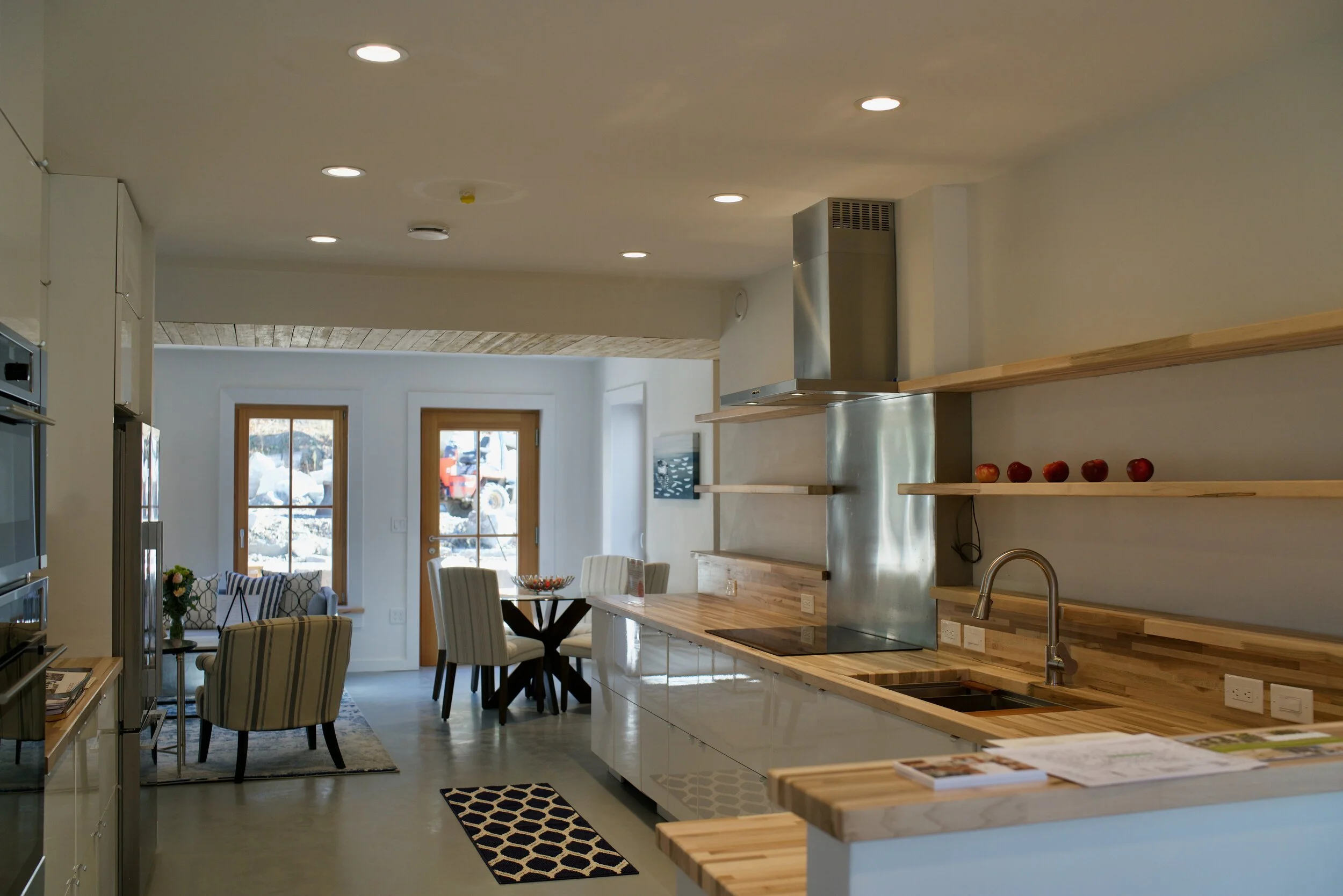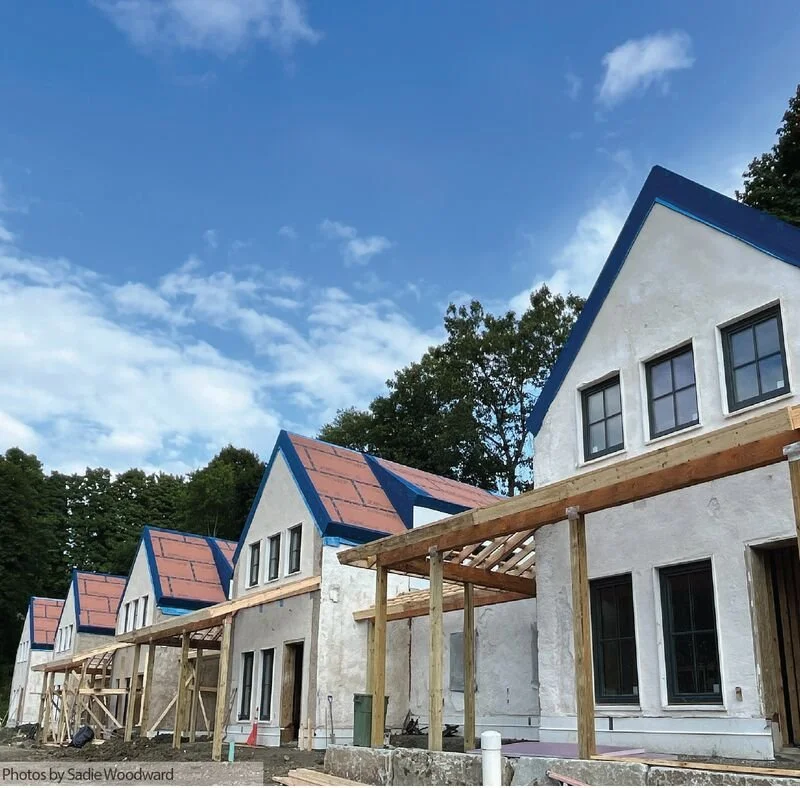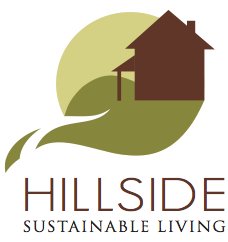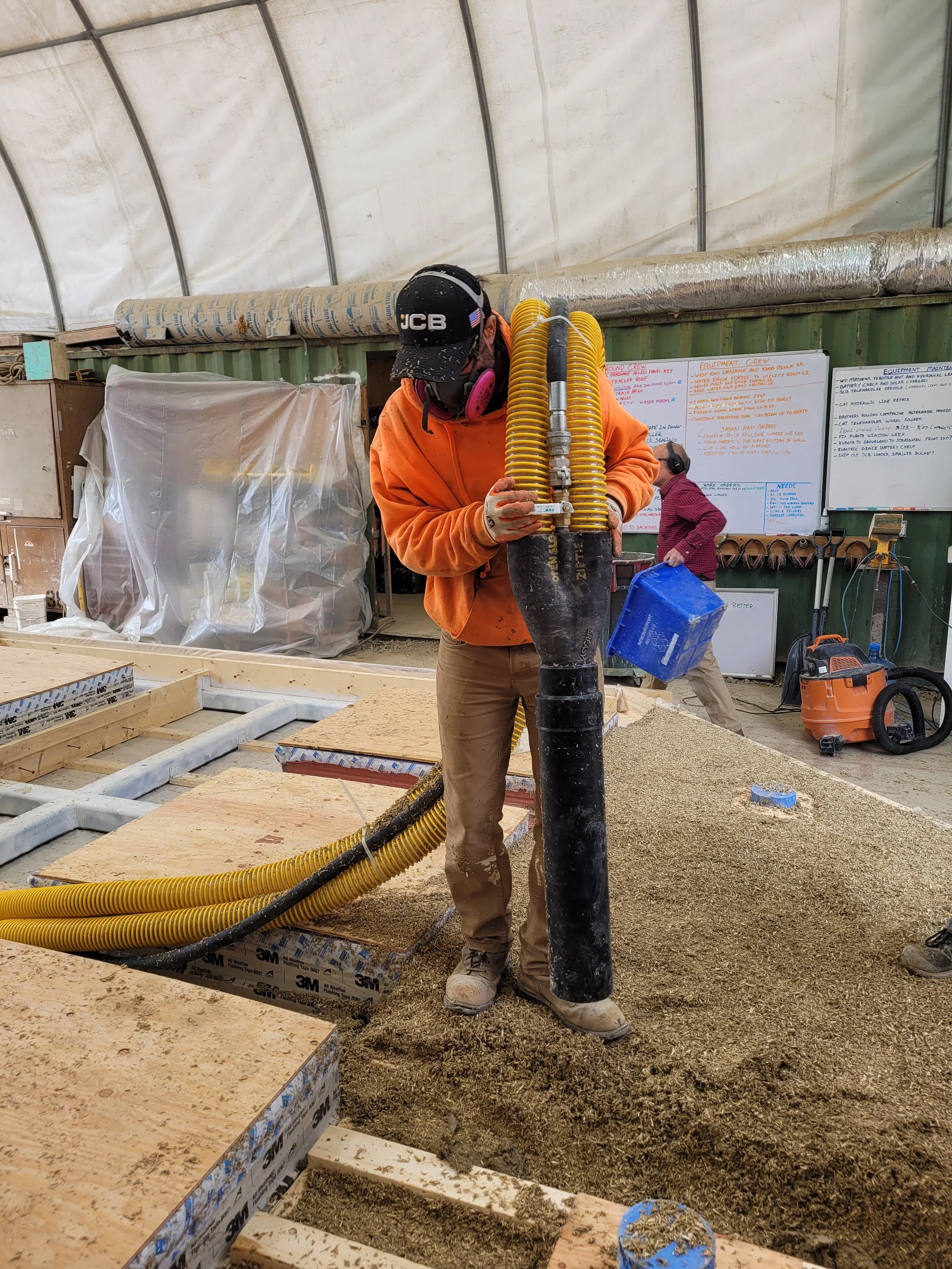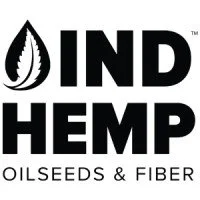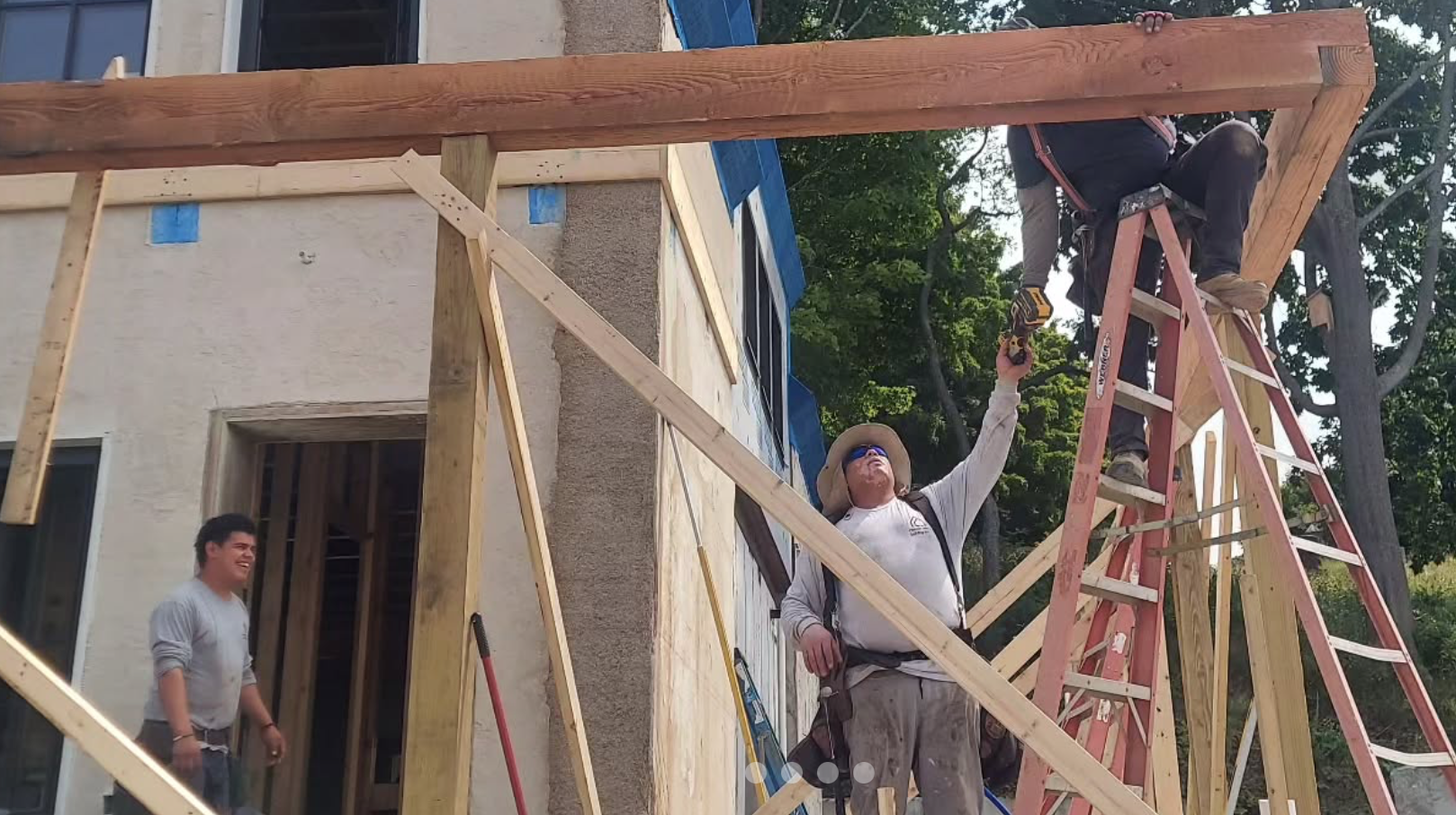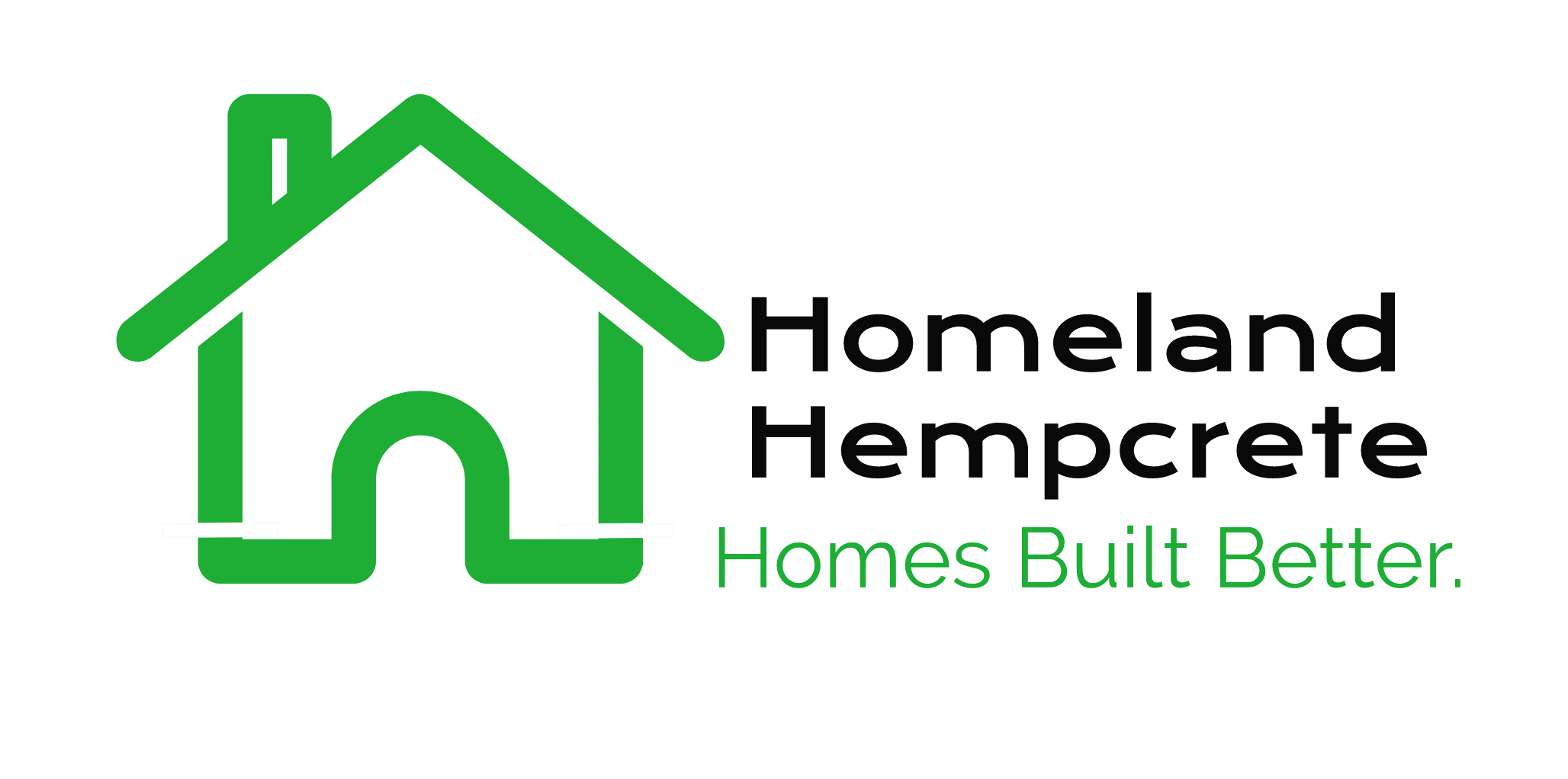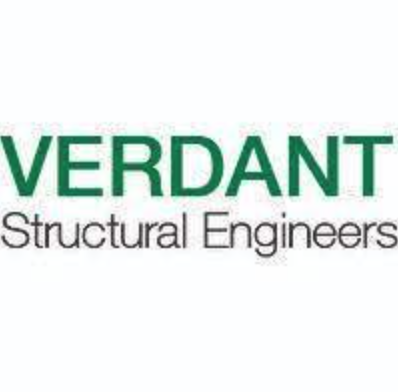MA Hempcrete Duplex Development Ready to Welcome Residents
MA Hempcrete Duplex Development Ready to Welcome Residents
By Elizabeth “Boo” Lunt
The largest hemp project in the United States consisting of 12 duplex units in Newburyport, MA will open to residents next month. Builder David Hall and architect Keith Moskow of Hall and Moskow Corporation have been working since 2023 on the Hillside Center for Sustainable Living, an attainably-priced multi-family housing development, from their own design of hempcrete over steel frame panels. The new hempcrete development will move in its first residents on February 15.
“I think it’s fascinating that Newburyport was a major hemp hub in the 1700’s where they made all the sails and rope for the ship building that was here,” said Hall, who was inspired by this when he and Moskow were looking for sustainable materials to use in their project.
Twelve units made of tip-up hempcrete panels have been built by the Hillside Center for Sustainable Living in Newburyport, MA. Photo by Sadie Woodward
Moving away from concrete and toxic foam
In 2018, the partners formed Hillside Living LLC to embark on the sustainable housing project which will eventually have 48 one-to-three bedroom units. They got to work figuring out what to build it from to make it sustainable and passive. The development is built on the remediated site of a coal ash dump from which 3,000 tons of toxic ash were removed.
The first two sets of multi-unit buildings are made from concrete and expanded polystyrene foam.
But Hall was focused on carbon sequestration, and he wanted a material that would be lighter and still serve that purpose. His research led him to Cameron McIntosh, of Americhanvre, who uses a French hempcrete spray system called Ereasy.
McIntosh, an industry pioneer who was the first to import a hempcrete spray installation system, was a key member of the group who got hempcrete ASTM-certified and is an innovative and enthusiastic builder. When Hall found him through his research, he thought “This guy knows what he’s doing!”
Hall noted that permitting is not easy and that they are lucky to have a building inspector with a very open mind with whom they have worked for years. “The fact that Cam and others had helped develop hemp-lime residential housing codes (2024 IRC Appendix BL) that has been adopted is huge.”
Company started in 1985
The company has been around since 1985, when the friends took over from their fathers, who had been developing in the area for decades prior.
Their fathers, he said, had always set an example of stewardship and conservation, so it was a natural direction for them to take Hall and Moskow. In 2004 they added a 60-kilowatt array on the roof to one of their first projects that had been built decades earlier, a redevelopment of a toxic former tannery into a shopping center. The solar power was, at that time, the largest privately owned solar array in the region, Hall notes with pride.
Panels weigh less than concrete
To make the hempcrete panels for the new 12 units, they replaced a lot of the structural concrete elements from their previous panel design with wood and tubular steel, and adapted the process for hempcrete. Hall realized that in order to make hempcrete a viable commercial material that would scale, he’d have to panelize the walls and then do tilt-up, which he says is a fairly common method in the US. “The bigger your panels and the fewer your seams,” he says, “the better off you are.”
Hillside’s hempcrete panels weigh 13,000 pounds (compared to concrete’s 25,000) and are 14 inches solid of hemplime fiber mix.
The building process proved a challenge with the new material.
“I would say the process demands respect,” Hall says of the Ereasy hempcrete system, noting that it is “moderately difficult” to perfect the application.
Installing porches on hempcrete duplex units. Photo courtesy of Hillside Center for Sustainable Living
To prevent twisting which can create fractures, they overbuilt the skeleton. They also included all the windows and electrical conduit into the panels while on the flat.
But it was the exterior coating that gave them the most trouble.
They’d gotten as much advice as they could but concluded that there is no consensus among natural builders about plaster ratios and formulas.
“We got as many opinions on plastering as people we spoke to,” Hall laughed. He was concerned about the micro-cracks that tend to appear in plaster and how to prevent them. While the panels were flat, they were able to put down a first coat using a mesh underlay with veins in it so that when it was tilted up they could apply the final coat.
Once tilted up, some bonds between the hemp fibers and the plaster coat broke and thick slabs of plaster started falling off the exterior. Hall recalls this was a tough moment in the project.
“I thought holy s*** what are we going to do now?” he says, noting that the building looked horrible with huge chunks of plaster missing.
Installing roofs on the units. Photo courtesy of Hillside Center for Sustainable Living
Goat hair ‘bonded like a bear’
“Contrary to what many people will tell you, plaster coats in excess of ½ inch will NOT allow your hempcrete to cure and dry out and calcify,” states Hall. On core tests performed after tilt-up, they learned that the hempcrete was still green and wet under the plaster where it was thickest. The curing issue was significant and worrisome.
Luckily, Hall was able to call McIntosh, who spoke to Damian Baumer, the founder of Ereasy in France. Baumer recalled having this problem on the north side of a building before and he had a special formulation for an exterior plaster coat made of slaked carmeuse lime, sand and metakaolin in a specific ratio that saved the day. They used this special binder coat, wet the wall and shot applied the plaster with the Ereasy. And that worked!
For the final exterior coat they used a variation of the same covering in a slightly different formula and then included the traditional binder goat hair, acquired from Pennsylvania company Limeworks. Hall says that if you talk to anyone in the plaster world they will say you have to use mesh to prevent the microfractures.
But at this point with the walls upright they could not do that so they turned to old-fashioned building materials with the goat hair and sprayed it through the Ereasy system with a carousel pump.
“It bonded like a bear to the hempcrete and the plaster” Hall says, and they now have a “beautifully white skin” on the building that is a bit like stucco owing to the lovely light sand they got from a quarry in Vermont.
Next they tackled the interior. Because they were going for a passive house certification - one of the most difficult to attain -- they needed the building to be airtight. Noting that “hempcrete is not a solid matrix.” Hall says they needed to add Zip-R board with insulation on one side and then seal around that.
“We were able to achieve the best numbers that the passive house technician has seen in his career,” Hall says with pride,”and that’s good news for hemp building. Our goal is replication.”
Please Support Our Classified Advertisers
(To find out more about advertising CLICK HERE).
Publications
Green Builders
Build your hempcrete dream house in Austin, TX with Gradek Contracting and Design
High Desert Hemp Homes - Building with hemp in the Rocky Mountains
Experienced Natural Building Engineering Services from Verdant Structural Engineers, CA
Naturalia Construction, Colorado-based Sustainable Construction with Hemp
Aaron Grail Construction, No. Cal: The intersection of art, design and performance
Hemp Building Research and Training
Hemp Build School online and IRL for Homeowners and Professionals
Follow the Hemp Casita to learn more about building with hemp.
Hemp Hurd (shivs)/Hemp Fiber/ Hemp Microfiber
CannaVision, Fort Worth, TX: Home of the Pulsewave Hemp Processor
IND HEMP: Supporting Farm Families and Rural Communities with Natural Materials Processing
Wyoming Hemp Company - Industry-leading industrial hemp suppliers
Aggricrete, TX, Natural Materials with Superior Sustainability
Hempcrete installers/Insulation subcontractors
Americhanvre Cast Hemp: Supplies, Equipment, Experienced Hempcrete Installation
Hemp Build Network: We Make Building with Hemp Possible, New Braunfels, TX
Hemp Building Company: Hempcrete installation, supplies Lafayette, CO
Hemp Batt Insulation/Supplies
Lime Binder
Hemp Wall Panel Products
Preorder your hempcrete tiny house from Sativa Building Systems
Panel solutions from Homeland Hempcrete
Hemp Composite Boards
Bison Biocomposites produces sustainable thermal insulation, hempcrete, hemp hurd, and more.
Hemp Blocks

